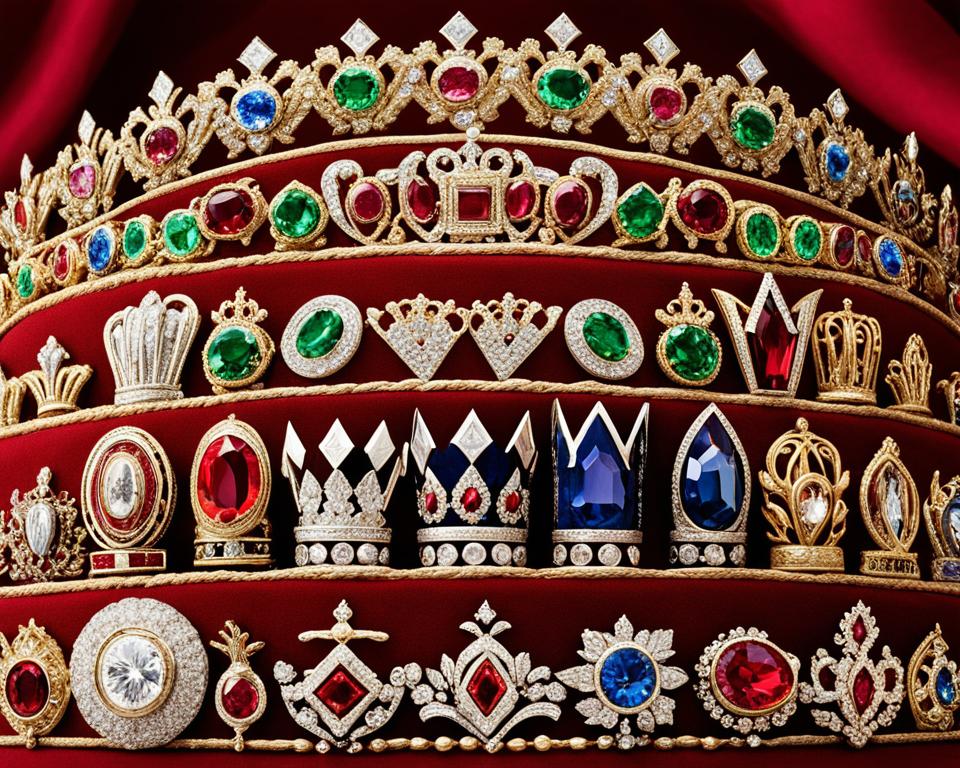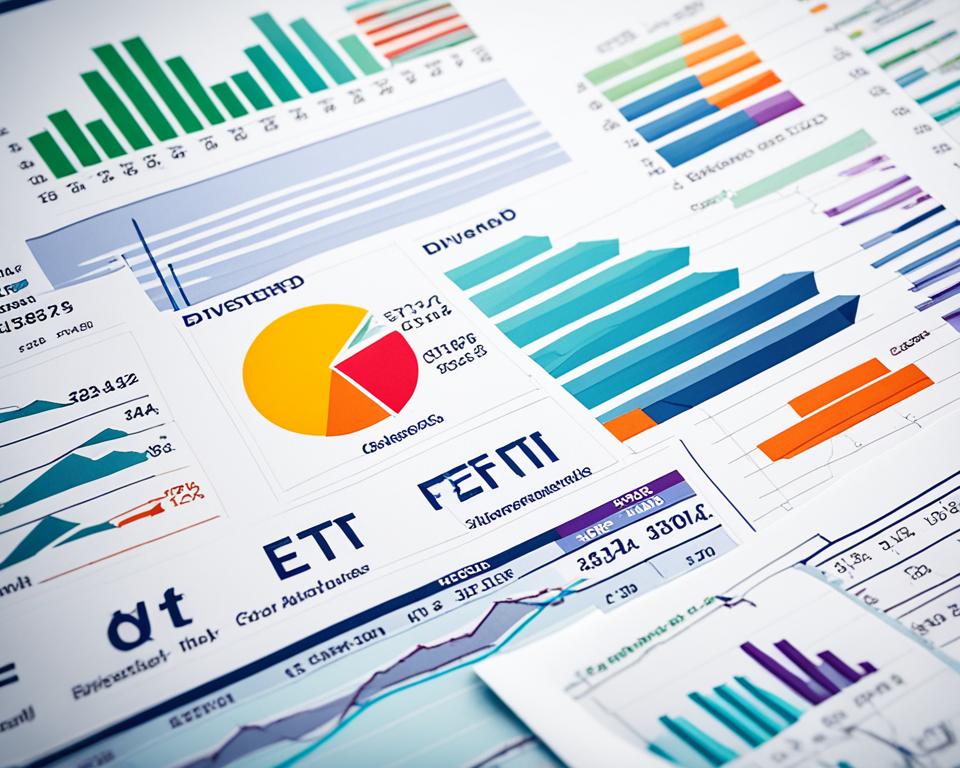You might be familiar with the thrill of dividend investing, where the best dividend stocks offer a twofold benefit: a steady stream of income and the potential for capital appreciation. Yet, among these dividend payers, two prestigious titles stand out – Dividend Aristocrats and Dividend Kings. In your venture into dividend growth investing, recognizing the difference between Dividend Aristocrats and Dividend Kings is crucial for crafting a portfolio that aligns with your aspirations for sustainable income growth.
Key Takeaways
- Dividend Aristocrats are companies in the S&P 500 with at least 25 consecutive years of dividend increases.
- Dividend Kings surpass Aristocrats with a history of over 50 consecutive years of dividend growth.
- Both Aristocrats and Kings are considered among the best dividend stocks due to their financial resilience.
- Understanding the distinction is key to tailoring your dividend growth investing strategy for long-term success.
- Aristocrats and Kings hold significant investment appeal as dependable sources of increasing dividends.
Introduction to Dividend Growth Investing
Imagine a financial strategy that marries the promise of regular income with the potential for stock value appreciation. This is the essence of dividend growth investing, a method that’s gaining traction among investors keen on securing sustainable income growth. At the heart of this strategy lie dividend aristocrats and dividend kings, titles bestowed upon companies that don’t just offer dividends but consistently increase them, showcasing a commitment to shareholders that’s as solid as oak.
So, what’s behind this investment allure? These companies tend to possess sound financial health – a testament to enduring strategies that have stood the test of market volatilities. Furthermore, the incremental increase of their dividends suggests robust, shareholder-friendly management and resilient operational frameworks. But what do these terms imply for your dividend investing strategy, and why should you consider them among the best dividend stocks?
For beginners and seasoned investors alike, understanding the mechanics of dividend growth is pivotal. By selecting companies with a prolonged history of dividend hikes, you’re not just investing; you’re handpicking potential partners in wealth creation that have demonstrated exceptional corporate steadiness and reliability over time.
Whether you’re supplementing your income or reinvesting dividends to compound your wealth, focusing on stocks that are renowned for not just sustaining but progressively increasing their dividends could be a game-changer. It leads to what every prudent investor seeks – a portfolio accented with sustainable income growth and a shield against the ebb and flow of economic tides.
As we delve deeper into this coveted strategy, let’s examine the traits and performance of companies leading the charge in rewarding their investors with growing dividends. The goal? To equip you with the knowledge to spot the shining knights in the stock market’s oft-tempestuous realm.
- Exemplary financial health and historical performance
- Management that prioritizes shareholder rewards
- Operational excellence that underpins consistent dividend hikes
Take the next step in your investing journey and weave the resilience and growth of dividend aristocrats and kings into your portfolio narrative. By doing so, you establish not just a stream of income but a legacy of growth that can contribute to your financial fortress.
The Distinction Between Dividend Aristocrats and Dividend Kings
As investors explore the rewarding domain of dividend stocks, two elite categories often captivate their attention: Dividend Aristocrats and Dividend Kings. Both signify a commitment to consistent shareholder returns and stand as testimonies to a company’s enduring success and stability. But what sets these two classifications apart? Let’s delve into what defines Dividend Aristocrats and Kings and why the dividend growth consistency they demonstrate is so valued in the investment world.
Definition of Dividend Aristocrats
Dividend Aristocrats are seen as royalty within the S&P 500 due to their enviable dividend records. These companies have consistently raised their dividends for at least 25 consecutive years. Achieving this status is no small feat – it requires not only a strong business model but also the foresight and discipline to navigate economic cycles while prioritizing shareholder value. Dividend Aristocrats are thus often large, established entities with stable earnings, making them some of the best dividend stocks for investors seeking reliability and growth.
Criteria for Dividend Kings
The criteria for Dividend Kings set the bar even higher. While remaining index agnostic, these companies must exhibit at least 50 consecutive years of dividend increases. This extraordinary milestone is indicative of an even greater level of corporate fortitude and financial health. Dividend Kings often represent businesses with deep moats, formidable market positions, and most importantly, the ability to consistently channel profits back to investors despite the economic backdrop.
The Importance of Dividend Growth Consistency
The hallmark of both Dividend Aristocrats and Dividend Kings lies in their dividend growth consistency. This enduring increase is a signal that resonates with investors, suggesting a company’s robustness and an unwavering pledge to deliver value to its shareholders. In an environment where dividends might fluctuate, the consistency of growth serves as a beacon of dependability. It reassures investors that they’ve placed their trust in companies that are not merely surviving but thriving through changing economic landscapes.
Assessing the Stability of Dividend Aristocrats
As you delve into the world of investments seeking the best dividend stocks, you’ll find that Dividend Aristocrats often stand as pillars of financial stability. These top dividend-paying companies merit a closer look not only for their ability to deliver consistent returns but also for their robustness against market tumult. Embedded in sectors like utilities, consumer goods, and healthcare, Dividend Aristocrats harness steady customer demand to generate resilient profits and record impressive dividend yields, making them an investor’s haven during economic fluctuations.
Why focus on Dividend Aristocrats? They represent a select group of companies that hold the prestige of increasing their dividends for at least a quarter of a century. This remarkable feat is a testament to their enduring business strategies and sound management practices that prioritize shareholder value – factors crucial for an investor like you seeking a dependable income stream.
Let’s conduct a dividend yield comparison of some Dividend Aristocrats across varied sectors to illustrate their stability and appeal:
| Company | Sector | Dividend Yield (%) | Years of Consecutive Dividend Growth |
|---|---|---|---|
| Johnson & Johnson | Healthcare | 2.6 | 61 |
| The Procter & Gamble Company | Consumer Goods | 2.4 | 67 |
| 3M | Industrials | 3.5 | 65 |
| Coca-Cola | Consumer Goods | 3.1 | 61 |
| Consolidated Edison | Utilities | 3.8 | 50 |
Upon reviewing the table, notice the variety of sectors represented and the dividend yields that reflect competitive returns. Furthermore, these companies do not merely scrape past the 25-year mark; many boast dividend growth streaks extending well beyond, solidifying their reputation as the best dividend stocks within their respective industries.

By integrating Dividend Aristocrats into your portfolio, you’re not only anchoring your investments with seasoned veterans of the stock market, but also cushioning yourself against potential economic shifts. Their hallmark stability and propensity for long-term value creation serve as cornerstones for a fortified dividend investing strategy.
In summary, Dividend Aristocrats warrant your attention as they stand as lighthouses amidst the sometimes stormy financial markets, guiding your journey towards consistent, growing dividends and promising a glimpse into enduring corporate success.
Understanding the Elite Status of Dividend Kings
When you delve into the realm of elite dividend stocks, the term Dividend Kings resonates with a sense of awe, signifying a rare breed of companies marked by a legacy of resilience and consistent shareholder value. But what does it take for a company to ascend to this regal ranking, and how does the elite status of Dividend Kings contribute to long-term investment value for you, the investor?
Dividend Kings have proven their might by demonstrating not just longevity but adaptability – they are the corporate titans that have weathered economic storms to deliver half a century of dividend growth. This achievement is no small victory; it requires strategic foresight, robust management, and a keen ability to evolve as market conditions demand. These are the stocks that anchor your portfolio, steeped in the tradition of returning increasing profits to shareholders year after year.
Let’s take a closer look at the characteristics that make Dividend Kings a crowning glory for investors seeking financial stability:
- Durable competitive advantages: Dividend Kings are often leaders in their respective fields with deep moats protecting their market position.
- Corporate management excellence: Their track records reflect an exceptional level of stewardship and decision-making acumen.
- Adaptability to changing markets: They are agile, bending but not breaking when faced with economic shifts.
Here’s a glimpse into the impressive lineage of some leading Dividend Kings that have enriched their shareholders for decades:
| Company | Sector | Consecutive Years of Dividend Growth |
|---|---|---|
| Procter & Gamble (NYSE: PG) | Consumer Goods | 67 |
| Johnson & Johnson (NYSE: JNJ) | Healthcare | 61 |
| Coca-Cola (NYSE: KO) | Consumer Goods | 61 |
| 3M (NYSE: MMM) | Industrials | 65 |
| Colgate-Palmolive (NYSE: CL) | Consumer Goods | 60 |
As you can see, top-tier Dividend Kings not only span diverse sectors but boast uninterrupted streaks of increasing dividends spanning generations. The carefully cultivated financial heritage these companies carry is your assurance of their commitment to growth and value.
By investing in Dividend Kings, you’re tapping into unsurpassed financial stability and the potential for a prosperous, dividend-rich future. These elite dividend payers are not just a portfolio choice; they are a long-term investment partnership that keeps on giving, making them a cornerstone for those who prize financial growth alongside income reliability.
Analyzing Dividend Growth Records
At the core of evaluating the best investment opportunities within the stock market, especially when it comes to top dividend-paying companies, lies a thorough analysis of dividend growth records. Understanding the nuances and historic dynamics of dividend distributions gives investors like you a window into the financial stewardship and long-term viability of a corporation.
Before we delve deeper into the specifics, it’s crucial to understand the metrics that signal a robust dividend policy. These are more than just annual yield percentages; they include consistency indicators and growth rates that collectively paint a picture of true fiscal resilience.
Now, let us examine the essential strategies and records that exemplify the power of compounding through steady dividend growth.
Examining Long-Term Dividend Growth Strategies
A deep dive into a company’s dividend growth strategy reveals a lot more than its present financial status. It lays bare the company’s trajectory of fiscal prudence and growth-oriented initiatives. When you’re examining long-term dividend growth, you’re essentially scrutinizing the blueprint of a company’s future as much as its past success.
The hallmark of a sound strategy isn’t just the commitment to paying dividends; it is the sustained incremental growth of those dividends. Whether it’s through expanding markets, innovating product lines, or optimizing operations, the maneuvers enterprises take towards ensuring continuous growth are of paramount interest.
While dissecting these strategies, some questions to ponder might include: Has the company’s dividend growth outpaced inflation? Does it correlate with the company’s earnings growth? The answers help formulate a clearer view of the investment’s potential prospects.
The Significance of a Steady Dividend Growth Track Record
The brilliance of ingenuity and leadership in a corporation can often be measured by their track record of steady dividend growth. It is the rhythm with which these dividends grow and the grace of its progression through turbulent market times that distinguish the exceptional from the good. A company that not only promises but delivers a solid dividend growth track record can often be thought of as a financial beacon for shareholders looking for sustainable growth.
Successively growing dividends suggest a combination of strong balance sheets, thoughtful capital allocation, and an inherent confidence that the management has in the company’s prosperity. For intelligent investors, putting their funds into companies with such a trajectory isn’t merely an investment—it’s a statement of trust in enduring corporate excellence.
The careful curation of these records provides actionable insights. The ones that have managed to do this well don many of the crowns in the financial markets, being called Dividend Kings, and for good reason. They stand as monuments to the testament of growing value, emphasizing that long-term thinking is not just a philosophy but a pragmatic approach to successful investing.
To exemplify the role they play in your wealth-building journey, let’s look at the Dividend Kings of 2024 and their enviable records. From consumer staples like Procter & Gamble to industrious giants like 3M, each represents a steady dividend growth track record that is nothing short of a financial saga.
- Procter & Gamble (NYSE: PG) / Consumer Goods / Dividend Increase Streak: 67 Years
- 3M (NYSE: MMM) / Industrials / Dividend Increase Streak: 65 Years
- Coca-Cola (NYSE: KO) / Consumer Goods / Dividend Increase Streak: 61 Years
- Johnson & Johnson (NYSE: JNJ) / Healthcare / Dividend Increase Streak: 61 Years
These companies are much more than their product lines; they are the embodiment of a pledge to deliver and grow shareholder wealth consistently. They underline the importance of examining long-term dividend growth and validate the long-term investment methodology.
As part of your investment strategy, consider the tales these dividend growth records tell. They’re narratives of solidity, forethought, and above all, a journey of sustained success that’s shared with every shareholder in the form of dividends. Now that’s a growth story that can stand the test of time.
Industry Representation Among Top Dividend-Paying Companies
For astute investors like you, pinpointing top dividend-paying companies is akin to discovering gold mines in the terrain of the stock market. These companies are spread across a panoramic array of industries, each offering a unique value proposition and a level of stability that can weather market fluctuations. But ponder this – what industries shine the brightest in the constellation of dividend play?
Industry representation paints a vivid landscape of where these dividend beacons dwell. Major players hail from sectors that deal in essentials, deliver services, and create products that remain in unwavering demand, irrespective of economic highs or lows. It is within these fortitudes – namely the industrial, consumer goods, and utility sectors – that you’ll often find the companies with sterling records of dividend payments and growth, a feature integral to an impactful dividend investing strategy.

Let’s not forget, it’s not merely about the allure of regular income but the power of dividend growth – a facet where these industries often excel. A dividend yield comparison further highlights the generosity of these sectors, with percentages that embolden your portfolio against inflation and economic turbulence, safeguarding your financial future.
Where does this all lead us? To a deeper understanding of how diversified your dividend-rich portfolio potentially can be, as you align it with corporations known for their unwavering commitment to rewarding shareholders.
Now, let’s engage in an illustrative examination of these industries represented by the top dividend-paying companies, showcasing their stalwart presence in the landscape of dividend reliability:
| Industry | Company | Dividend Yield (%) | Years of Dividend Growth |
|---|---|---|---|
| Consumer Goods | The Procter & Gamble Company | 2.4 | 67 |
| Industrials | 3M | 3.5 | 65 |
| Utilities | Consolidated Edison | 3.8 | 50 |
| Healthcare | Johnson & Johnson | 2.6 | 61 |
| Consumer Goods | Coca-Cola | 3.1 | 61 |
This table serves not simply as a navigation chart for informed investing, but also as a testament to the impressive dividend hikes these companies have committed to year over year. By aligning yourself with such industry representation, your portfolio is bound to reflect not only financial pragmatism but also a vision for sustainable growth.
Your journey into the domain of dividend investing ought to be strategic, leveraging sectors synonymous with steady demand. As we navigate the vast expanse of dividend opportunities, remember the importance of diversity – not just in your holdings, but in the industries that underpin them, serving as the bedrock for your pursuit of consistent and growing dividends.
How do Dividend Aristocrats and Dividend Kings Differ?
Investing in dividend-paying stocks is a time-honored approach to generating steady income, but understanding the difference between Dividend Aristocrats and Dividend Kings is essential for investors aiming to optimize their portfolios with some of the best dividend stocks available. Dividend Aristocrats and Dividend Kings are the cream of the crop in the dividend universe, yet each group wears its crown for different reasons.
At their core, Dividend Aristocrats are renowned for their impressive track record of at least 25 years of consistent dividend increases. Included in the S&P 500 index, these companies have proven their mettle in diverse economic climates, offering investors a blend of stability and incremental income growth. This makes them mainstays in many dividend investing strategies, reflecting a steadfast commitment to shareholder returns.
In contrast, Dividend Kings have taken this commitment a step further, with at least 50 years of consecutive dividend hikes. This half-century tradition of annual dividend growth marks them as unparalleled stewards of investor value with uncompromising fiscal discipline. To reach such a royal status, these companies have not just existed but excelled over multiple generations, endearing them to those who prioritize long-term income reliability.
Engaging in a dividend yield comparison can further illuminate the distinctions. While Dividend Kings may boast a more extended history of dividend growth, this does not necessarily translate into higher yields. Factors such as market conditions, corporate financial strategies, and industry-specific dynamics all play roles in determining the yields investors can expect from these elite dividend-paying stocks.
Understanding these nuances is vital for investors aiming to weave the resilience and long-term profitability of Dividend Aristocrats and Kings into their portfolios. It calls for a diligent assessment of company fundamentals, evaluation of industry trends, and a close eye on the stability of dividend payouts amidst market fluctuations.
The table below provides a snapshot of a few companies known for their remarkable dividend distribution histories, standing out as leading examples of either Dividend Aristocrats or Kings:
| Company | Status | Years of Consecutive Dividend Growth |
|---|---|---|
| Johnson & Johnson | Dividend King | 61 |
| Procter & Gamble | Dividend King | 67 |
| 3M | Dividend King | 65 |
| AT&T | Dividend Aristocrat | 35 |
| Walgreens Boots Alliance | Dividend Aristocrat | 45 |
As you consider your investment approach, remember that whether it’s the stalwart reliability of Dividend Kings or the formidable growth history of Dividend Aristocrats, each contributes uniquely to a robust dividend yield comparison and investment strategy. Both groups, with their distinct timelines and proven dedication to shareholders, stand out as the best dividend stocks to anchor a portfolio poised for enduring success.
Dividend Yield Comparison Between Aristocrats and Kings
Embarking on your dividend investing strategy means navigating through the topography of top dividend-paying companies to find the most fertile grounds for yield. But when the paths of Dividend Aristocrats and Dividend Kings cross, how does one discern the most fruitful route? One essential tool is the dividend yield comparison, which illuminates the distinctions and potential advantages of each. While Dividend Kings may hold the torch for longevity, it’s a complex landscape where higher tenures don’t always equate to higher yields. Thus, a prudent investor like you should consider various factors shaping these yields.
With both types of stocks having cemented their statuses as resilient pillars in many portfolios, it’s crucial to delve into the depths of their dividend policies. As these companies navigate the stock market’s tides, their yields reflect not just past triumphs but also current strategies and future aspirations. How do these yields stack against each other, and what might they signal about your investment’s horizon?
| Company | Status | Dividend Yield (%) | Years of Consecutive Dividend Growth |
|---|---|---|---|
| Johnson & Johnson | Dividend King | 2.6 | 61 |
| Procter & Gamble | Dividend King | 2.4 | 67 |
| 3M | Dividend King | 3.5 | 65 |
| AT&T | Dividend Aristocrat | 7.0 | 35 |
| Walgreens Boots Alliance | Dividend Aristocrat | 3.3 | 45 |
As the table above reveals, Dividend Aristocrats and Kings offer a diverse array of yields which, akin to a finely-aged wine, vary in richness and texture. Assessing these yields in your quest for dividend investing excellence calls for a tactical eye—a blending of historical data with forward-looking financial analysis.
Behind every dividend yield sits a tale of corporate decision-making, reflective not only of stock prices but also of dividend payout ratios and sector-specific momentum. Whether you endorse traditional champions with time-tested policies or the aristocratic allure of a consistently growing stock, the yields tell a story crucial for your strategy.
In your pursuit of the golden balance within your portfolio, remember that the shimmering lights of Aristocrats and Kings are benchmarks against which to measure the potential of other contenders. May your path of dividend growth investing be guided by these constellations, as you seek to crown your portfolio with the royalty that matches your financial vision.
Exploring the Dividend Aristocrats of 2024
As you refine your approach to dividend growth investing, giving special attention to the esteemed dividend aristocrats 2024 can elevate your strategy. This select group champions enduring fiscal resilience and shareholder commitment. Seeking out these titans within the sphere of top dividend-paying companies not only aligns you with proven performers but enhances your portfolio with a pedigree of excellence.
Envision a roster that includes acclaimed names like AT&T, Walgreens Boots Alliance, and IBM. Even amid challenges such as fluctuating oil prices and the residual impacts of a global pandemic, these corporations have adeptly navigated market vicissitudes. They’ve done more than simply survive; they’ve thrived by faithfully hiking dividends and reaffirming their aristocratic status.
Their stories of resilience and consistency are not just anecdotes but illustrations of adroit market navigation. These companies bolster the notion that in the realm of dividend investing, solidity over sparkle often yields sustained prosperity. Embrace these stalwarts, and allow the legacy of their unyielding dividend growth to underpin your investment decisions.
Examine the data, witness the histories, and imagine the possibilities as you contemplate the composition of your dividend-laden portfolio. Here’s a stimulating snapshot:
| Company | Sector | Dividend Yield (%) | Years of Consecutive Dividend Growth |
|---|---|---|---|
| AT&T | Telecommunications | 7.0 | 36 |
| Walgreens Boots Alliance | Retail/Pharmacy | 3.3 | 45 |
| IBM | Technology | 4.5 | 26 |
Incorporating these venerated dividend aristocrats into your investment tapestry isn’t just wise—it’s a strategic embrace of the history and solidity they represent. These companies are not mere placeholders in the annals of fiscal accomplishment; they are dynamic entities evolving with the times, yet steadfast in rewarding those who journey alongside them.
Hold dear the knowledge that as the winds of the economy shift and swell, your alliance with 2024’s dividend aristocrats could be a beacon guiding you toward a future punctuated with anticipated dividend growth. Let this exploration of top dividend-performing aristocrats be the compass that navigates you through the tapestry of financial markets.
Identifying Today’s Dividend Kings and Their Market Impact
As you embark on your journey through dividend growth investing, you’ll find a prestigious group at the pinnacle of this landscape: the current Dividend Kings. These are the stocks to watch, the exemplars of enduring value amidst the flux of market conditions. As of January 22, 2024, 55 stocks have ascended to this lofty perch, including the likes of Procter & Gamble, Coca-Cola, and Johnson & Johnson.
But what makes a Dividend King so revered? Is it merely the title, or is there tangible market impact of dividend stocks bearing this crown? Let’s dissect the attributes that hoist these companies above the fray and the remarkable influence they wield in the realm of investment portfolios.
Imagine a cadre of companies unwavering in their commitment to increase dividends every year for at least 50 consecutive years – that is the hallmark of a Dividend King. This remarkable streak of reliability shows a history of resilience and strategic acumen that’s as rare as it is reassuring to the investor seeking stability.
The influence they exert on the market is multifaceted. They serve as a beacon for quality and stability, traits that are magnified during times of economic uncertainty. Moreover, the resilience they display often buoys investor confidence, which is nothing short of pivotal in crafting a strategy focused on dividend growth investing.
| Company | Sector | Consecutive Years of Dividend Growth |
|---|---|---|
| Procter & Gamble (NYSE: PG) | Consumer Goods | 67 |
| Coca-Cola (NYSE: KO) | Consumer Goods | 61 |
| Johnson & Johnson (NYSE: JNJ) | Healthcare | 61 |
While these extraordinary achievers illuminate the path of dividend growth investing, there are outliers within the cadre of kings, like companies that issue a stock dividend, adding nuance and breadth to what it means to be part of this royal assembly. Yet, even with such unconventional methods in play, these companies reinforce their role as bastions of yield, tradition, and growth.
As you contemplate your next move in the stock market, consider the sterling qualities that these Dividend Kings embody. With their stout histories and the promise they hold, they might just provide the keystone for your investment portfolio—a robust pillar supporting your ambitions for a future of growth and stability.
With a sharp eye and a keener sense of strategy, craft your portfolio to include these paragons of perennial growth. Recognize the indelible market impact of dividend stocks, particularly those that have earned the unrivaled distinction of being Dividend Kings, and harness their potential to buttress your aspirations of wealth and fiscal well-being in the domain of dividend growth investing.
Investment Strategies Featuring Dividend Aristocrats and Kings
Within the universe of investment strategies, there lies a proven approach that has stood the test of economic cycles: focusing on dividend aristocrats and kings. This strategy revolves around selecting companies with a history of not only paying dividends but also consistently increasing them, making them sought-after for their durability and reliability.
Building a Portfolio with Dividend Aristocrats
When building a portfolio, many investors start with Dividend Aristocrats because of their impressive streaks of increasing dividends year over year. Integrating Dividend Aristocrats into your investment portfolio can offer a fusion of stability and growth potential. Consider the following when selecting these reliable income sources:
- Evaluate company fundamentals against the broader economic backdrop to assess stability.
- Seek out aristocrats with a solid track record that also offer growth opportunities, supporting a resilient income stream.
- Prioritize sector diversity to mitigate risks and tap into various growth potentials.
These selections will aim to build a portfolio foundation that can stand firm against market volatility.
Investment Considerations for Including Dividend Kings
Dividend Kings take the concept of sustained growth a step further, with over 50 years of continually increasing their payouts. While incorporating Dividend Kings into your investment strategies, ponder over the following:
- Analyze their long-term financial health, ensuring these kings can maintain their payouts.
- Consider the impact of a stock’s individual dividend yield versus your portfolio’s overall yield.
- Take into account historical resilience, especially the company’s performance during economic downturns.
Investing in Dividend Kings is about looking past short-term market noise and focusing on companies that have shown the rare ability to provide shareholders with stable and growing returns through thick and thin.
Future Outlook: Dividend Aristocrats and Kings in a Changing Economy
As we shine a spotlight on the future outlook for dividend aristocrats and kings, a pattern of resilience and adaptability emerges, positioning them as beacons of fiscal stability in the face of shifting economic conditions. History has shown that these lauded entities are not only survivors but also skillful navigators amidst the maelstrom of market fluctuations. This provides you, the investor, a measure of confidence in their potential to maintain and even grow dividend yields in various geopolitical climates.
The robust nature of dividend aristocrats and kings is complemented by their ability to wield durable competitive advantages, which play a pivotal role in sustaining and increasing dividends. This perceived durability suggests that even when inflation looms large or interest rates spike, these companies are more apt than others to endure and, where possible, capitalize on changing tides.
Despite the uncertainty that potential recessions bring, the allure of dividend aristocrats and kings remains undiminished. They are exemplars of prudent financial management and consistent performance, which are particularly prized in times where predictability becomes a scarce commodity. While no investment is entirely recession-proof, the historical precedence set by these upper-echelon stocks offers a reassuring glimpse into their future conduct and continued significance.
This trust in the performance of dividend aristocrats and kings is underpinned by their strategic responses to economic cycles. Astute corporate governance—characterized by careful capital allocation and forward-thinking policies—ensures that these companies not only survive but thrive as they adapt to an ever-evolving financial landscape. As such, they stand as a testament to enduring investment value.
The propensity of dividend aristocrats and kings to withstand economic challenges elevates them to a position of esteem for those seeking to bolster their portfolios against the unknowns of the future.
Let’s explore some examples of dividend aristocrats and kings that illustrate the fortitude and forward-thinking nature of these resilient stocks:
| Company | Sector | Dividend Yield (%) | Years of Dividend Growth |
|---|---|---|---|
| Emerson Electric (NYSE: EMR) | Industrials | 2.7 | 67 |
| PepsiCo (NASDAQ: PEP) | Consumer Goods | 2.9 | 51 |
| Abbott Laboratories (NYSE: ABT) | Healthcare | 1.7 | 52 |
| Stanley Black & Decker (NYSE: SWK) | Industrials | 1.9 | 56 |
| Walmart Inc. (NYSE: WMT) | Consumer Goods | 1.6 | 50 |
As you contemplate your next move in the investment chess game, consider the durable nature of the dividend aristocrats and kings. With the endurance to sustain dividend payouts and the elasticity to stretch beyond their historical boundaries, they may serve as stalwarts in your portfolio, ready to combat the volatility that changing economic conditions might present.

The pursuit of stable dividends in a world of financial ebbs and flows can often feel like a daunting task. Yet, the underlying robustness of dividend aristocrats and kings shines as a beacon of hope. The commitment to shareholder value these companies uphold can be the financial compass guiding your portfolio to a prosperous and assured future, no matter the weather that lies ahead.
Conclusion
In the world of investing, dividend growth investing stands as a beacon for individuals who prioritize sustainable income growth coupled with the potential for capital appreciation. At the helm of this investment philosophy are dividend aristocrats and kings, a distinguished cadre of companies boasting a time-tested pedigree of fiscal fortitude. These entities have carved their niches by not only offering consistent dividends but by also raising them year after year—a testament to well-honed financial management and leading market positions.
When you focus on incorporating dividend aristocrats and kings into your portfolio, you’re tapping into streams of ever-flowing fiscal promise. These stocks are more than mere placeholders; they are cornerstones of a solid financial future. By championing reliable performance, they offer a semblance of predictability in the otherwise unpredictable seas of market trends. This kind of stability is not just a rarity—it’s an asset, one that can anchor your pursuits in sustainable income growth.
So as you chart your course toward long-term investment success, let the legacy of dividend aristocrats and kings guide your strategy. With their blend of sturdy dividends and potential for capital gains, they remain significant for anyone looking to build a robust fiscal foundation. Such deliberate investment choices are not only wise but can serve as a salient part of your financial journey toward both passive income and dynamic portfolio growth.
FAQ
What is the difference between dividend aristocrats and dividend kings?
The key difference between dividend aristocrats and dividend kings is the length of time they have consistently increased their dividends. Dividend aristocrats are S&P 500 companies that have increased dividends for at least 25 consecutive years. In contrast, dividend kings have achieved over 50 consecutive years of dividend growth, regardless of their membership in the S&P 500 index.
Why is dividend growth investing considered a valuable strategy?
Dividend growth investing is a strategy that focuses on companies that not only pay dividends but have a history of consistently increasing their payouts over time. This approach can lead to sustainable income growth and potential appreciation in stock value, making it an attractive option for many investors seeking both stability and growth.
What are the criteria for a company to be considered a dividend aristocrat?
A company qualifies as a dividend aristocrat if it is included in the S&P 500 index and has increased its dividend payouts for at least 25 consecutive years. These companies tend to demonstrate financial stability and commitment to shareholder returns.
What attributes make a company eligible to be called a dividend king?
To earn the title of a dividend king, a company must have a history of raising its dividends for at least 50 consecutive years. These companies may or may not be part of the S&P 500 but have showcased an extraordinary commitment to their dividend policy over an extended period.
Can a high dividend growth consistency signal the company’s overall health?
Yes, a consistent increase in dividends over many years usually signals solid financial health, strategic planning, and a commitment to delivering shareholder value. It is often an indicator of a company’s ability to generate profits steadily and manage its capital effectively.
How do dividend aristocrats exhibit stability?
Dividend aristocrats typically belong to sectors with consistent consumer demand, such as healthcare, consumer goods, and utilities, which allows these companies to generate steady profits and dividends even during economic downturns.
Why do dividend kings hold an elite status among investment stocks?
Dividend kings hold an elite status because achieving over 50 years of consecutive dividend growth is a rare and significant accomplishment, reflecting exceptional corporate management, financial health, and a strong sustainable competitive advantage.
How important is a company’s long-term dividend growth strategy to investors?
A company’s long-term dividend growth strategy is crucial for investors as it provides insights into the firm’s long-term viability, strategic financial management, and its ability to consistently return value to its shareholders.
What industries are well-represented among top dividend-paying companies?
Industries such as industrial goods, utilities, and consumer staples are often well-represented among the top dividend-paying companies. Firms in these sectors usually provide necessary products and services, resulting in stable demand and the capacity for consistent dividend payouts and growth.
Does a longer history of dividend growth guarantee a higher dividend yield?
Not necessarily. While dividend kings have a longer dividend growth history, the dividend yield — the dividend as a percentage of the stock price — varies depending on the company’s stock performance and dividend policy. Therefore, both dividend aristocrats and kings can have different yield profiles.
Who are some of the notable dividend aristocrats in 2024?
As of 2024, some of the prominent dividend aristocrats include AT&T, Walgreens Boots Alliance, and IBM. Despite facing various industry challenges, these companies have maintained their status and continued their streak of dividend growth.
Which companies are recognized as Dividend Kings and how do they impact the market?
Recognized Dividend Kings as of 2024 include enduring companies like Procter & Gamble, Coca-Cola, and Johnson & Johnson. These firms have a profound impact on the market as their prolonged records of dividend growth attract investors looking for long-term, stable returns.
What are some factors to consider when building a dividend investment portfolio?
When building a dividend investment portfolio, factors to consider include industry diversity to mitigate risk, the financial strength of the companies, and the economic outlook that could affect dividend sustainability. Longevity and resilience of the companies through different economic conditions are also key considerations.
What is the future outlook for dividend aristocrats and kings in light of economic changes?
The future outlook for dividend aristocrats and kings is generally positive, as these companies have historically shown the capacity to navigate through various economic conditions successfully. While they may face challenges from macroeconomic factors, their track record implies a strong potential for adaptation and sustained dividend growth.












